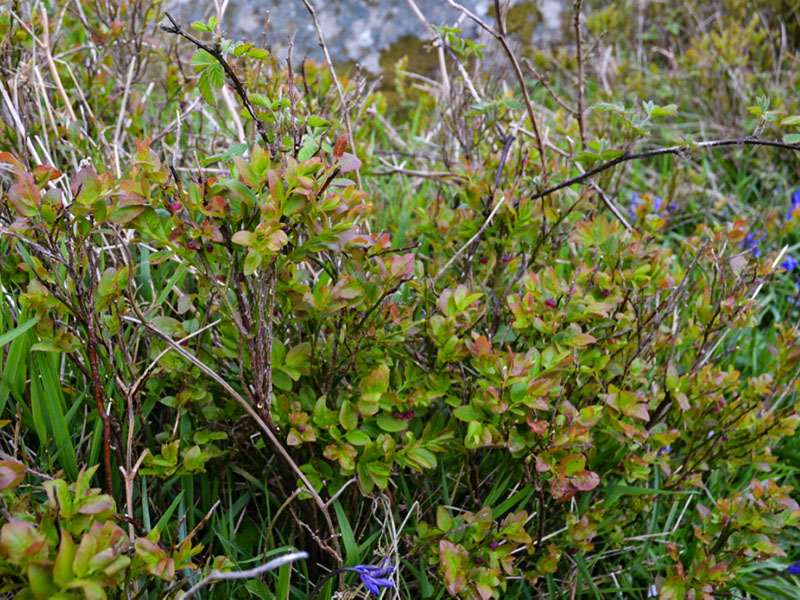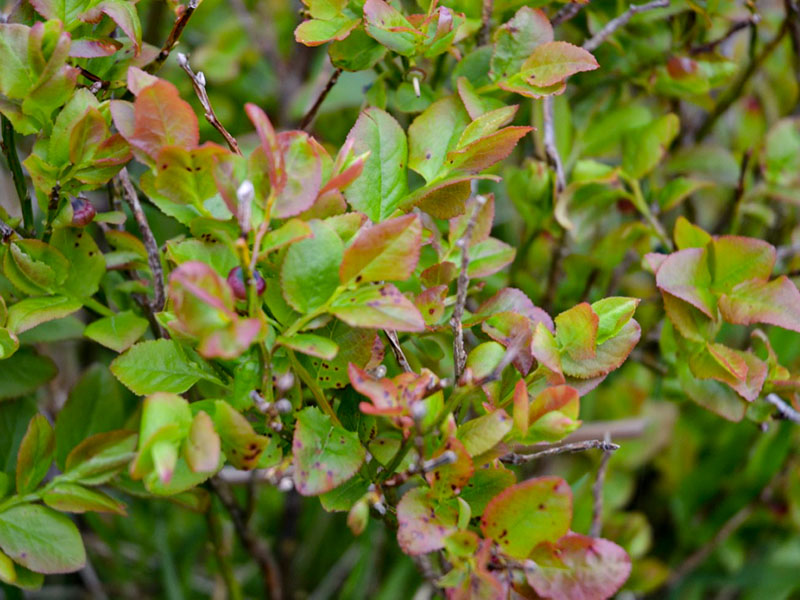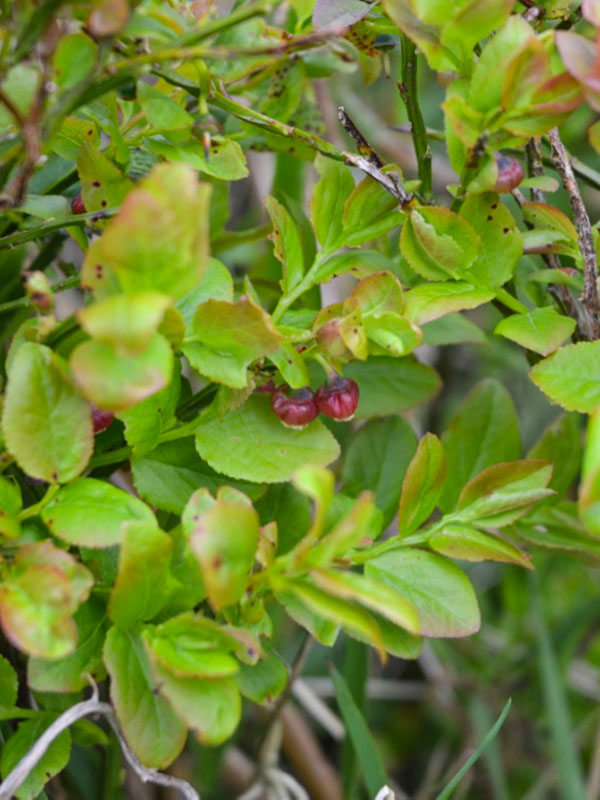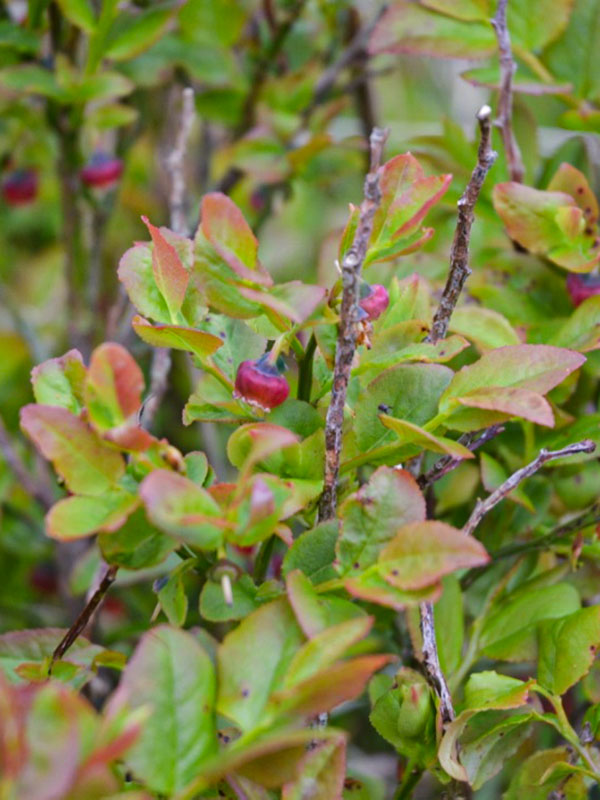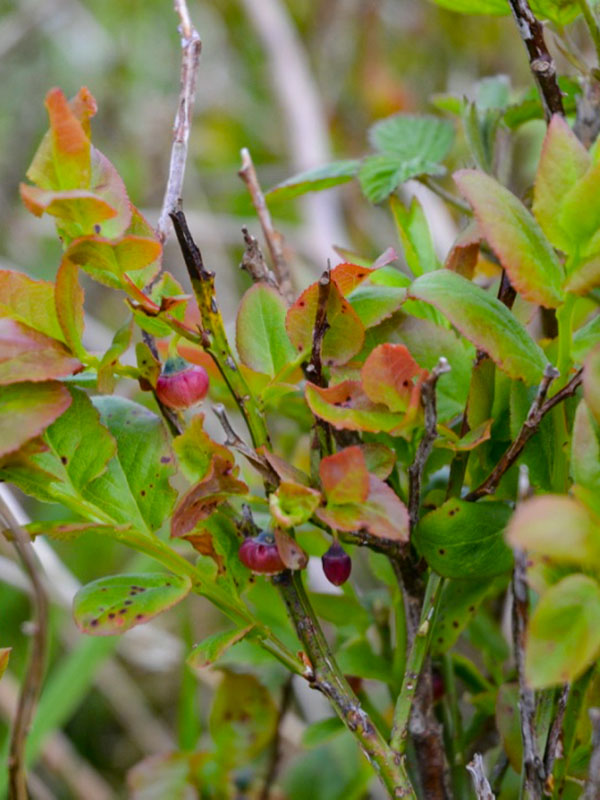Vaccinium myrtillus (Whortleberry, Bilberry)
Botanical Information
| Family | Ericaceae |
| Genus | Vaccinium |
| Species | myrtillus |
| Synonyms | Vaccinium myrtillus oreophilum, Vaccinium oreophilum |
| Category | Woody |
| Type | Shrub (deciduous) |
| Origin | Britain, southern Iceland, and eastern Spain. |
Details
| USDA Hardiness Zone | 3a - 7b |
| USDA Hardiness Ref. | |
| Canadian Hardiness Zone | 3 - 7 |
| Canada Hardiness Ref. | |
| RHS Hardiness Zone | H7 - H5 |
| RHS Hardiness Ref. | |
| Temperature (°C) | -40 to -10 |
| Temperature (°F) | -40 to 14 |
| Height | 0.2 m |
| Spread | 0.3 m |
| Flowering Period | April, May, June |
Description and Growing Information
| General Description | A shorter deciduous fruiting bush. The flowers bloom in spring and produce the navy blue bilberries by September. |
| Shape | Low, open-growing. |
| Propagation | Cuttings taken in June will grow well, especially under misted conditions. Also propagated by seed. |
| Cultivation | Requires a moist but freely-draining lime free acidic soil with a pH in the range of 4.5 to 6. |
| Pests | Generally has few drastic pest and disease issues. It can however suffer from: blueberry maggot, blueberry stem borer, cranberry fruitworm, cherry fruitworm, Japanese beetle, leafroller, leafhopper and aphids. |
| Notable Specimens | Carn Brea Castle, Carnkie, Redruth, United Kingdom. |
| Habitat | Woodland garden, sunny borders or in dappled shade. |
| Bark/Stem Description | New growth is a semi-glossy green turning to a medium brown with age. Stems show some red colour in the winter. |
| Flower/Leaf Bud Description | Tiny brownish-red buds, 2-3 mm long and 1-2 mm wide. |
| Leaf Description | Dark blue-green foliage in the summer, changing to crimson-bronze in autumn. Simple leaf, 0.75-2 cm long, 1-1.25 cm wide in an elliptical/ovate shape. |
| Fruit Description | Dark blue, sometimes purple-black berries that appear in mid-summer, 5-10 mm across. They have a sweet and acidic taste when eaten raw. |
